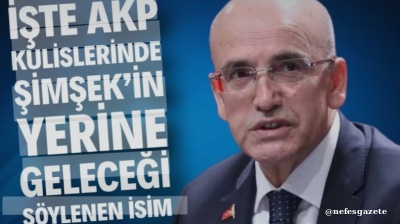The board of the Central Bank of Russia (CBR) has resolved to cut the key interest rate by 200 basis points (bp) from 20% to 18%, as strong disinflation trend in July untied the regulator’s hand in supporting the economy that slides from overheating to recession.
As followed closely by bne IntelliNews, the decision was largely expected by the market, with consensus forecasts unanimously betting on a key rate cut. The majority of the analysts guided for a decisive policy action of at least 200bp rate cut.
Most respondents cited rapidly moderating inflation, resilient ruble strength and slowing GDP growth as key arguments for a deeper rate cut. CBR Governor Elvira Nabiullina had also recently indicated a willingness to cut rates more aggressively if disinflation and economic cooling accelerated.
Latest indicators such as deteriorating business sentiment, consumer demand running out of steam, manufacturing PMI index and industrial output data indeed confirmed that Russian economic growth appears to be rapidly slowing down.
As a reminder, the CBR’s June previous key interest rate cut from 21% to 20% was its first monetary easing move in nearly three years. But as inflation finally converges to CBR target, the regulator finally has the space to manoeuvre with its monetary policy.
Inflation in annual terms since been stable in single digits since May. Inflation dynamics withstood utility tariff hike in the beginning of July. Last week the CBR acknowledged that inflation is within its official target for the first time this year.
“The current inflationary pressure, including persistent components, is declining faster than previously projected,” the CBR said, adding that the effects of monetary tightening are becoming more visible, especially in non-food goods.
Despite this disinflationary trend, as followed by bne IntelliNews, inflation expectations remain stubborn.
The CBR indeed noted that “a stable trend towards lower inflation expectations has not yet formed”. At the same time, the regulator confirmed that labour market tensions are easing, with fewer firms reporting staff shortages and wage growth slowing, although still outpacing productivity gains.
The regulator asserts that “given the ongoing monetary policy, annual inflation will decline to 6%-7% in 2025, return to 4% [official target] in 2026, and remain at target thereafter”.
As followed closely by bne IntelliNews, the signs of a slowdown in Russia are clear, with analysts guessing whether the economy overheated by the full-scale military invasion of Ukraine is headed for a “soft” or “hard” landing.
Whether the Russian economy is headed for a recession and the exhaustion of its growth drivers is now a part of policy debate.
The CBR also acknowledged that “the deviation of the Russian economy above the balanced growth path is narrowing”, meaning that overheating is over.
“Real-time data, including for 2Q25, and survey indicators suggest a further slowdown in domestic demand growth alongside continued moderate overall economic activity,” the CBR press release reads.
Previously the analysts expected the key interest rate to be cut to 14%-16% by the end of 2025. Still, the CBR refrained from giving a clear dovish guidance on the monetary policy, stating that “pro-inflationary risks outweigh disinflationary ones over the medium term”.
Data

Serbia to repatriate entire gold reserve amid global uncertainty
Serbia’s central bank plans to repatriate the country’s entire gold reserves from abroad, becoming the first Eastern European country to hold all of its bullion domestically.

Putin’s public trust rating steady at 77.9% in July - VTsIOM
President Vladimir Putin’s public trust rating rose slightly to 77.9%, according to the latest data from the Russian Public Opinion Research Centre (VTsIOM), TASS reported on July 25.

USAID funding cuts have disrupted crucial Demographic and Health Surveys in 23 countries, says OWID
Demographic and Health Surveys that provided crucial data on health, mortality and development in many lower- and middle-income countries were funded by USAID, but are no more.
_1753419481.png)
Weekly deflation ahead of Russia’s CBR meeting
Russia's consumer prices fell by 0.05% week on week during the week of July 15 to July 21, following a slight increase of 0.02% the week before.

.png)


